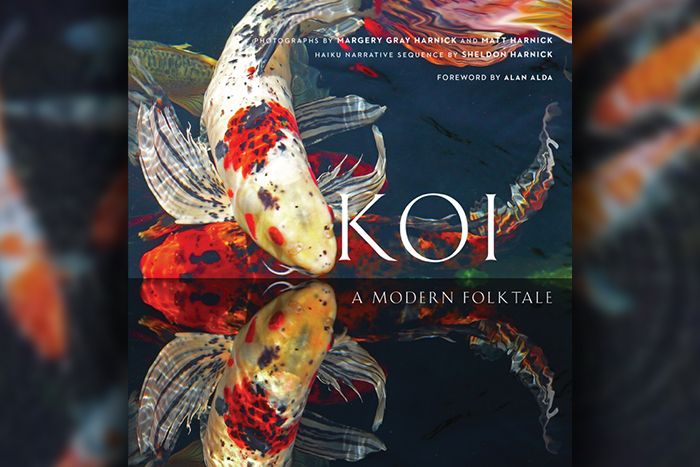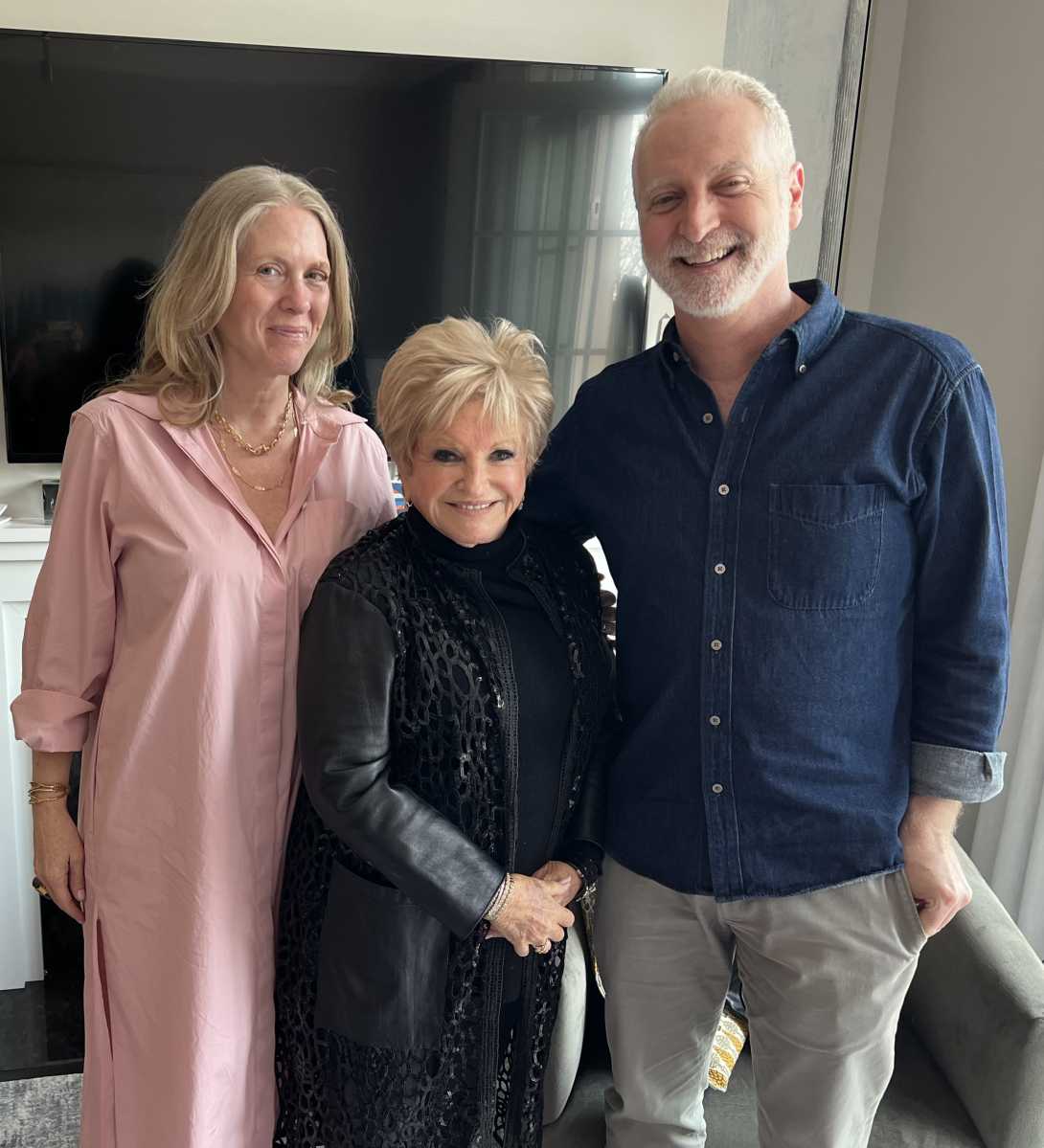By the Book: Review – Nothing Coy About the Harnicks’ 'Koi'

It all started when Margery Gray Harnick and her husband, Sheldon Harnick, longtime residents of East Hampton, were visiting Margery’s daughter Beth in California. There, in sunny suburban Malibu, Beth’s friend Jasmin has a koi pond in her backyard. Margery and Sheldon were smitten.
“We were just stunned by the beauty of these fish,” says Sheldon, who is best known as the Pulitzer Prize–winning lyricist behind such classic musicals as Fiorello and Fiddler on the Roof.
“I took hundreds of pictures,” says Margery. “I’ve never seen anything so beautiful.”
Now, the Harnicks have published Koi, a dazzling look at these creatures and the mythology surrounding them. The book features reproductions of Margery’s photographs interspersed with a haiku series by Sheldon, presenting his take on one of the many legends about koi. The Harnicks’ son, Matthew, also contributed photographs to the book and devised digital manipulations to help illustrate the story. They call Koi a modern folktale.
For those unfamiliar with koi, they are a colored form of carp that come in a startling variety of colors and with a wide variation in detail. Usually found in specially designed koi ponds, the fish are mesmerizing to watch as they swim about. Margery Harnick’s photographs capture the splendor of koi in freeze-frame, allowing for closer observation of each koi’s unique characteristics.
“I’ve always been quite interested in the visual and in reflection,” says Margery. “It all comes together in my photography.” Incredibly, all of the beautiful photographs of koi in the book were shot in just two sessions—right there in Jasmin’s backyard in Malibu.
The Harnicks didn’t start out with a book in mind. But Margery gave all of the photographs to Sheldon, and soon a story started coming together in his mind.
“With some research on the web, I discovered these legends relating to koi,” says Sheldon. Many of these legends feature koi being transformed into dragons by the gods. Sheldon decided to write his own variation on this myth—and he decided to write it, appropriately enough, in the form of a haiku series.
“Because the fish are of Asian origin, I felt that the verse form should be Asian,” says Sheldon. He had never written a haiku before, but found the discipline to be a pleasurable challenge.
The story Sheldon came up with presented another sort of challenge to Margery—namely, how to illustrate the koi changing into dragons. This is where son Matthew comes in. Matthew’s skills with digital manipulation allowed him to take Margery’s photographs and create images of koi undergoing transformation.
“It took us a very long time to come up with something that worked,” says Margery. “But what Matthew did works beautifully.” The digital enhancements create sharper contrasts and convey a vivid—even somewhat frightening—sense of unearthly power.
In his forward to Koi, actor and Water Mill resident Alan Alda draws a parallel between the captivating fish pictured in the book and the captivating songs penned by Sheldon Harnick. “That was a surprise,” says Sheldon, “but I was delighted by what he wrote.”
Alda’s analogy may seem like a stretch at first—like comparing apples and oranges—but give it some time. A clever song—and Sheldon Harnick has written many—has a way of continually surprising us with its wit. A heartfelt ballad—and Sheldon Harnick has written many—has a way of continually taking our breath away with its beauty. So, too, with these surprising, beautiful koi. And, just as with good songs, the pleasure these fish bring, so arrestingly conveyed in the Harnicks’ new book, can strengthen and sustain.



